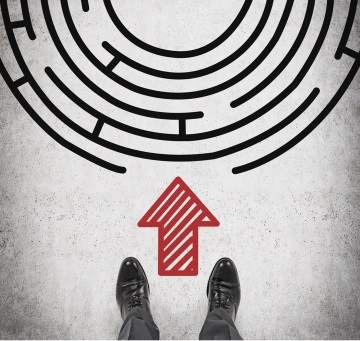Personal loans come in many sizes and forms. The kind you apply for depends on a few things.
So let’s start with your credit. If you don’t know much about credit reports and scores, don’t worry. We have a credit guide that will walk you through all the details of what a credit score is and help you figure out if your credit is excellent, good, average or bad.

If you have excellent credit, you can start by going to your local bank or credit union. They will likely give you the best interest rates and terms, but…(this is a big but) you have to have a great credit score, a stable job that has been the same for at least two years, and fill out a lot of paperwork.
Most banks and credit unions don’t like taking much risk, so they want to make sure you will pay the loan back and on time. They usually only lend to the borrowers with high credit scores.
If your credit is not perfect, you can still qualify, but you will have to put up some kind of collateral. This is something you own that has value, usually a car or the equity in your house.
This is called a secured loan because it is “secured” with your collateral, meaning if you don’t pay you to lose whatever you backed the loan with.
This is the hardest type of loan to qualify for and only a small percentage of borrowers get approved.
If your credit is not that good, you can still apply for a credit card (which is a type of personal loan), or a payday loan or cash advance.
The catch is you will pay more for the credit (interest rate and fees). In the case of payday loans or cash advances, you will have to pay the money back fast. Sometimes you’ll have to pay the entire loan back by your next paycheck. Some lenders do offer longer installment loans. An installment loan is stretched out longer and you make equal payments over a specific time period. Typically, you make monthly installment payments.
A credit card is what’s called revolving debt because you pay a minimum monthly payment. As long as you pay your minimum payment, your credit limit stays the same and you can charge (or borrow) whatever is available.
If you had $1,000 credit limit and you charged $500 over the course of the month and your minimum payment was $50, you’d have $550 of available credit (less interest and fees) after you make your monthly payment. This credit limit is available as long as you have the card. You can pay more than the monthly payment, but you don’t have to. In a sense, you never really pay this debt off if you just make minimum payments.
Another thing to think about is how much money you need to borrow. If you just need a few hundred backs, a credit card is probably a better, easier way to get the money than a bank or credit union loan. But if you need thousands of dollars, you’re probably better off going to the bank. You have to have almost perfect credit to get a really high credit limit ($5000 or more for a credit card).
If your credit is bad or you need the money fast — and you don’t have collateral, you’ll likely need to seek a payday loan or cash advance. Most of these lenders don’t review your credit. Instead, they look at the fact that you have a job, earn at least $1,000 per month and are an adult (18 years or older). You will need a bank account too. But the lenders don’t require any kind of collateral.
A personal loan is not the same as a car loan or a home loan. You can only use a car loan to buy a car and a home loan or mortgage to buy a house. The loan is actually backed by the car or home and you can only get approved if you buy the home or car the loan is for. When you buy or sell the home or car, the new buyer pays off the loan and usually gets a new one.
On the other hand, a personal loan can be used for just about anything — financial emergencies, bills, even vacations. You can also use a personal loan to consolidate or combine all your debt payments into one monthly payment.
We’ll talk more about that in Part 2 of Personal Loans — “Debt Consolidation: Combining Your Debts Into One Loan.”